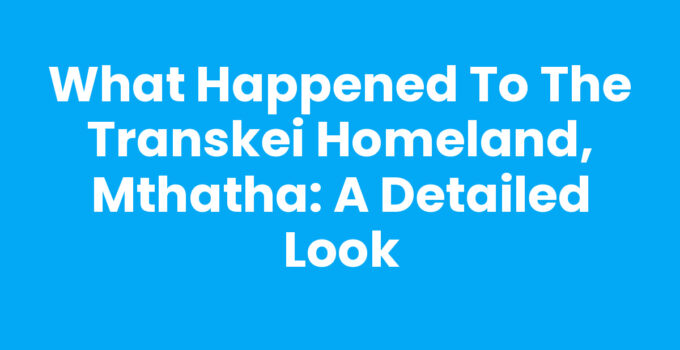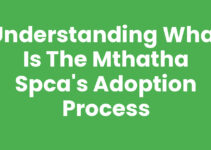The Transkei, once a significant part of South Africa’s apartheid-era homelands, has a complex history that impacts the contemporary socio-political landscape of the region. Mthatha, located within the Eastern Cape province, served as the capital of the Transkei and plays a critical role in understanding the developments that transpired in this homeland. In this blog post, we will delve into the origins, evolution, and eventual decline of the Transkei, providing a comprehensive overview of its significance.
What Happened To The Transkei Homeland, Mthatha: A Detailed Overview
The Transkei was established in 1963 under the apartheid regime as one of the first of ten nominally independent homelands or Bantustans. This region was designated for the Xhosa-speaking population, resulting in significant dislocation of communities. The concept of homelands aimed to confine black South Africans to specific territories and maintain white supremacy in South Africa.
Initially, the Transkei was celebrated as a supposed model of self-governance; however, the reality was starkly different. The South African government implemented its policies to ensure that the homeland had minimal economic viability and severely restricted political power. In 1976, the Transkei became fully ‘independent’ from South Africa, but most countries did not recognize this status.
Throughout the late 1970s and 1980s, the Transkei faced severe economic challenges, exacerbated by internal conflicts, corruption, and mismanagement. Many people in the region suffered from poverty and unemployment, which has continued to affect the area profoundly.
In 1994, the dissolution of the apartheid system led to the re-integration of the Transkei into South Africa. The homeland’s government was dissolved, and it became part of the modern Eastern Cape province. The transition aimed to better integrate these communities into the national framework, yet challenges persist.
Today, Mthatha serves as a focal point for historical remembrance and socio-economic development efforts. The city’s infrastructure has been a beneficiary of post-apartheid investment; however, legacy issues from the Transkei period still require attention. The current post-apartheid policies focus on improving conditions in Mthatha and surrounding areas, targeting job creation, education, and health care.
The Legacy of the Transkei: Cultural and Historical Impact
The cultural legacy of the Transkei remains significant. It holds a rich tapestry of Xhosa traditions and languages, which continue to thrive. The area has produced notable figures, including former South African President Nelson Mandela, whose heritage is deeply tied to the Eastern Cape.
Post-apartheid South Africa acknowledges the importance of preserving the history of the Transkei while promoting development. Traditional leaders still play a key role in the community, influencing cultural preservation and governance.
Current Socio-Economic Landscape in Mthatha
Present-day Mthatha faces significant socio-economic hurdles. The city grapples with high levels of unemployment and poverty, remnants of its past as a homeland. Various initiatives are in place, aiming to revitalize the economy, improve education, and enhance public services. One of the key developments has been the promotion of tourism, capitalizing on its historical significance and natural beauty.
Investment in infrastructure projects continues, focusing on roads, health care facilities, and community services. Local government and NGO partnerships are essential in driving these changes to uplift the community.
In summary, while the legacy of the Transkei homeland in Mthatha presents both historical significance and contemporary challenges, there is a continued effort towards healing, development, and embracing cultural heritage as part of South Africa’s vibrant tapestry.
Conclusion
The Transkei’s journey from its inception to its current socioeconomic status illustrates the broader narrative of South Africa’s struggle against apartheid and the quest for equality. Understanding what happened to the Transkei homeland in Mthatha gives insightful perspectives on the ongoing efforts for transformation and unity within South Africa.
Frequently Asked Questions
What was the purpose of the Transkei homeland?
The Transkei homeland was created to segregate black South Africans and confine them to designated areas under apartheid policies, claiming to offer self-governance.
When did the Transkei become part of South Africa again?
The Transkei was re-integrated into South Africa in 1994 following the end of apartheid, as the homelands policy was abolished.
How does the Transkei influence modern Mthatha?
The Transkei's historical and cultural legacy still influences modern Mthatha, impacting socio-economic conditions and community identity.









